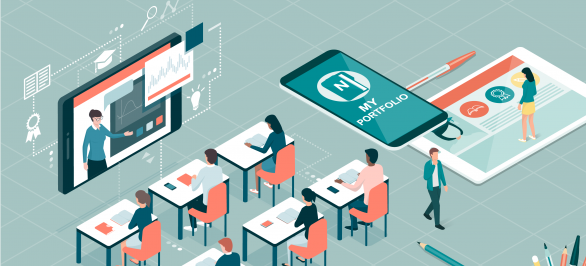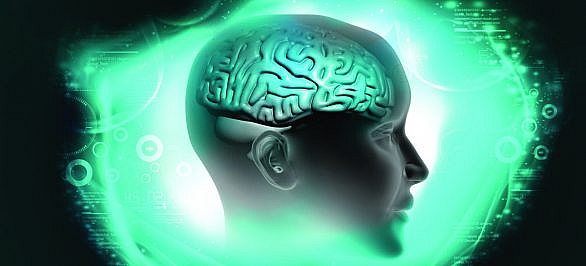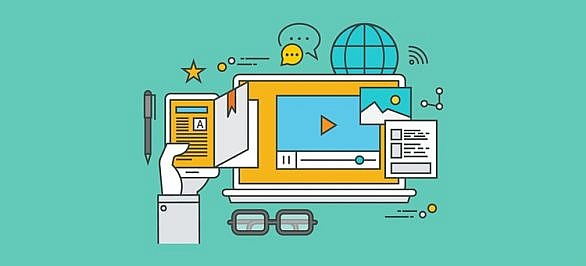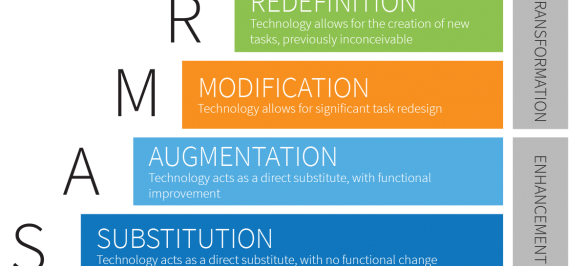Formative assessment is simply defined ongoing activity that assists teachers to track students’ learning and progress. Also, Black and Wiliam (1998) define formative assessment as: “all those activities undertaken by teachers, and/or by their students, which provide information to be used as feedback to modify the teaching and learning activities in which they are engaged (p.82)”. The results may help them adjust the instruction and make decisions in designing the learning environment. Not only teachers but also students
…Blog Posts
Mobile learning also called M-Learning is an innovative way to reach learning content via portable devices such as laptop, tablet or smartphone. It is referred as a term to depict a form of learning, which enables to learn whenever and wherever peope are. M-Learning has been used from the early 2000s but has increasingly gained popularity for the last decade. There has been many studies conducted to investigate the effectiveness of M-Learning. The results confirm the so called claims in
…Learning is facilitated when graphics and texts work together to communicate the instructional message (Clark & Mayer, 2016). Graphics are robust materials to promote learning. They are also called as “pictorial expression of information”. Winn (1989) asserts “graphics convey meaning by making the complex more simple and the abstract more concrete”.However, it is important to use graphics for instructional purposes. Woodward (1999) state that many of the graphics embedded in textbooks do not serve educational purposes. Educators should be aware
…World Wide Web (WWW) is defined as a system of interlinked hypertext documents accessed via the internet. Anyone who has internet connection can see web pages which involve multimedia tools such as text, images or videos. The proposal of Tim Berners-Lee in 1989 and Robert Cailliau, a computer scientist was to use hypertext to integrate information into a web as nodes where users can view. In this way, World Wide Web was designed as the first web service.
The premise in multimedia learning is that the combination of words and pictures enhance understanding and learning, improve retention and impact academic achievement. Therefore, it is noteworthy to integrate multimedia learning into education. It could be a video, PowerPoint presentation or an online course.
In order to maximize learning, Richard Mayer developed a theory of 12 Principles of Multimedia Learning. These principles are seen as a guidance to those who benefit from the multimedia
…Richard Mayer in his book, Multimedia Learning, explains the premise that multimedia learning maximizes learning and understanding and elaborates on the relationships between the brain and multimedia learning. For this purpose, he developed the Cognitive Theory of Multimedia Learning to explain how it works and how we can best make use of it.
Richard Mayer defines multimedia learning as the presentation of materials using both words and pictures. In broader
…Many times in education we are told to differentiate instruction to both reach our struggling students and challenge their more advanced peers. Unfortunately, what usually happens is we are told to do this, but then not told how.
Over the past few years, instruction and technology have allowed us to move beyond a, ‘one size fits all,’ approach to teaching. Teachers have learned instructional strategies that help fit the needs of individual student abilities and tap into student passions. In
…It’s hard enough for teachers to stay current on instructional methodologies and practices, let alone keep up with the shift toward teaching with a growth mindset. Luckily, technology is the perfect vehicle for creating this opportunity! District administration, teachers, parents, and students should all have a voice in integrating technology into the classroom. Many are seeking out ways to support themselves with this shift in mindset.
There are many apps that will serve for them to transform teaching and
…‘Internet Generation’ calls for a more innovative and digital learning environment. Without considering this, designing a lesson evidently would not lead successful learning. This belief is getting more popular between educators as they realize the characteristics of 21st century learners. Most of them strive for integrating technology into classes and curriculum however, there is a need to measure and improve the quality of integration rather than using solely for “tech for tech’s sake”.
The SAMR (Substitution, Augmentation, Modification, Redefinition)
…The term ‘English as a lingua franca’ (ELF) is defined as “a way of referring to communication in English between speakers with different first languages” (Seidlhofer, p339, 2005).
ELF is often perceived as a ‘pidgin’ language with a simplified lexicon and grammar structures. The norms are not based on appropriateness of Standard British English or American English. Seidlhofer (2005) states that some errors made by non-native speakers did not affect on communication and therefore can be integrated into English
…








